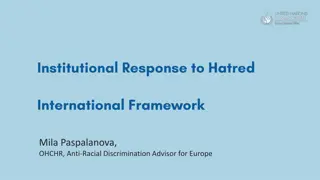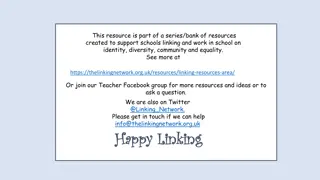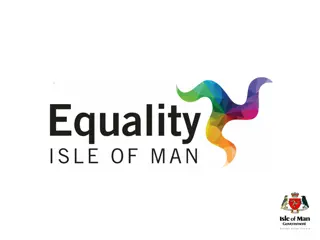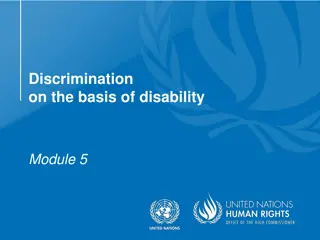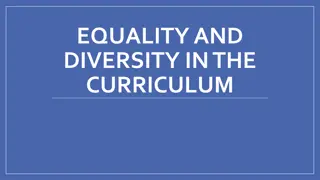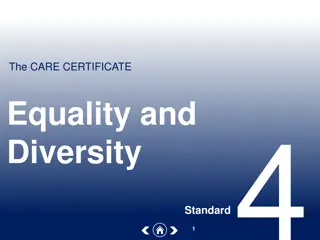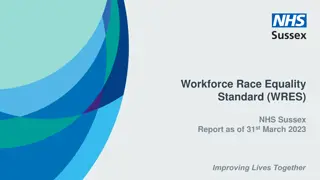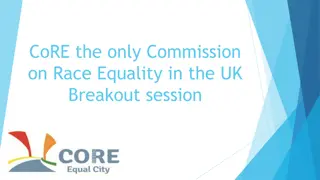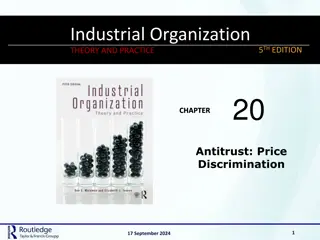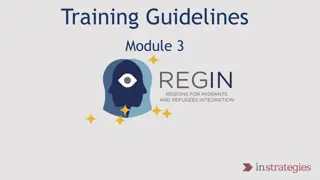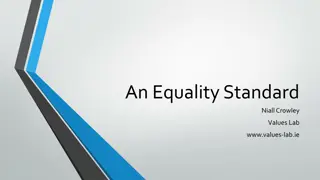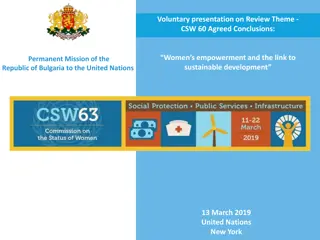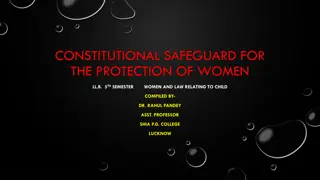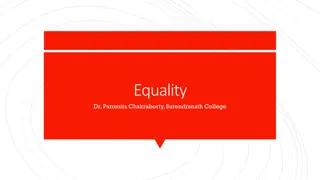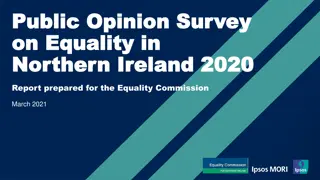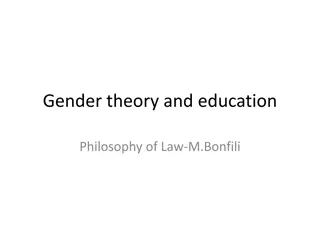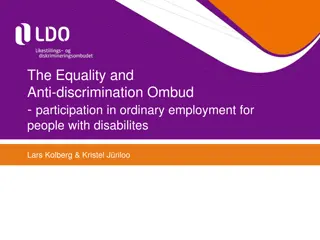Understanding Equality and Diversity: Importance, Discrimination, and Practice
Explore the definitions of equality and diversity, their importance, anti-discriminatory practices, and reflection on assumptions. Learn about discrimination laws and practical ideas to promote inclusivity. Engage in thought-provoking discussions and activities to enhance awareness and understanding.
Download Presentation

Please find below an Image/Link to download the presentation.
The content on the website is provided AS IS for your information and personal use only. It may not be sold, licensed, or shared on other websites without obtaining consent from the author. Download presentation by click this link. If you encounter any issues during the download, it is possible that the publisher has removed the file from their server.
E N D
Presentation Transcript
Aim of Session What is Equality and Diversity? Why is it important? The Law What is Discrimination? Practice ideas
Learning Outcomes By the end of the session, participants will be able to: Show an understanding of the definition of Equality and Diversity and key legislation. Articulate the importance of anti-discriminatory practice Reflect on their own assumptions and prejudices
Groundrules Listen and value everyone s input Respect confidentiality Look after yourself and opt out if needed Question differences constructively No question is too stupid to ask
The two terms are not the same but are related. We should identify and value differences between everyone (DIVERSITY) if we are going to ensure everyone has equal rights and opportunities (EQUALITY).
1. On average corporate officers/directors in the United States earn how much more than the average worker? a. 50 times b. 150 times c. 300 times 2. How much more likely are people with learning difficulties to have more general medical problems? a. Same b. 2.5 times c. 4.5 times 3. What is the largest immigrant group in Britain? a. Pakistani c. Irish d. Polish 4. How many children around the world die each day from hunger-related causes? a. 160,000 b. 16,000 c. 1,600
5. In the UK what percentage of people of working age have a disability? a. 20% b. 25% d 30% 6. What percentage of people around the world live on less than $750 per year? a. 15% b. 50% c. 75% 7. Sexuality and Sexual Orientation are terms for the same thing? a. True b. False 8. According to UNICEF, the wealth of the three richest people in the world is roughly equal to the Gross Domestic Product of the: a. 48 poorest countries b. 78 poorest countries c. 108 poorest countries 9. In the U.S. how much more likely are African American and Latino mortgage applicants to be turned down for a loan? a. 15% b. 30% c. 60%
10. Britains first ethnic minority MP was; a. Dutch Jewish b. Parsi Indian c. Black Christian 11. According to a recent study, what percentage of the top CEOs are women? a. 12.2% b. 1.2% c. 0.2% 12. Where is the largest Sikh temple outside India? a. Quebec b. London c. Sydney 13. Who was the first black professional footballer? a. Arthur Wharton b. Viv Anderson c. Pele
1. 2. 3. 4. 5. 6. 7. 8. 9. 10. 11. 12. 13. 300 2.5 times Irish 16,000 20% 50% False The 48 poorest countries 60% Parsi Indian Dadabhai Naoroji in 1892 1.2% London It opened in 1997 costing 17 million Arthur Wharton who played in goal from 1889
Everyone should be treated fairly regardless of any visible or invisible factors, with the same access to services to opportunities Barriers and discrimination that people face due to actual or perceived differences should be removed Because of their capabilities or needs, some people will need to be treated differently to ensure that they have an equality of opportunity . This can sometimes be called Positive Action
Recognising, respecting and valuing individuals for being unique and having a range of visible and invisible differences. Everyone should have opportunities to reach their full potential by promoting an inclusive culture.
What are visible differences? Age Race Gender Physical attributes What are invisible differences? Marital status Religious or political beliefs Educational background Some disabilities Sexual orientation
What assumptions do we make about people? Why do we come to the conclusions we do? When do we make these assumptions? Where can this cause us difficulties? How can we stop ourselves?
Age Disability Gender reassignment Pregnancy & maternity Sexual orientation Marriage and civil partnership Sex Race Religion and/or belief



